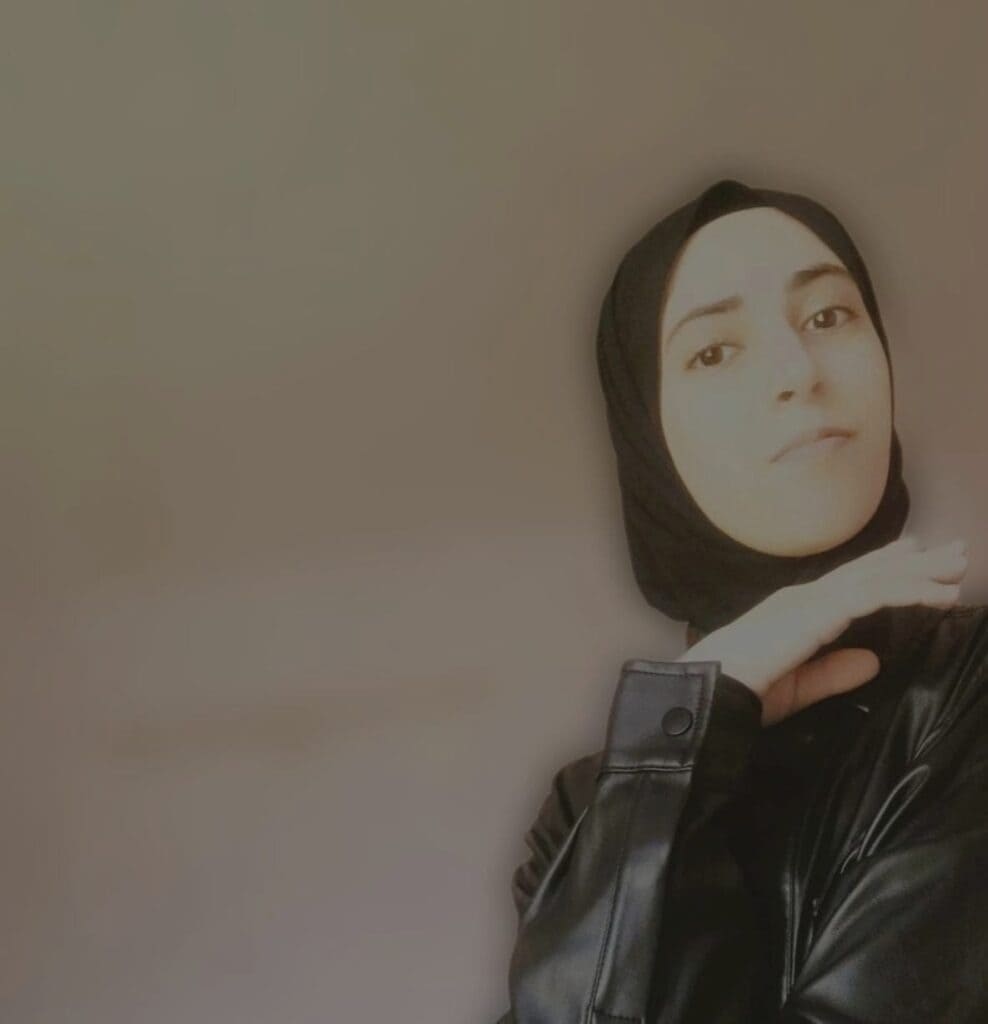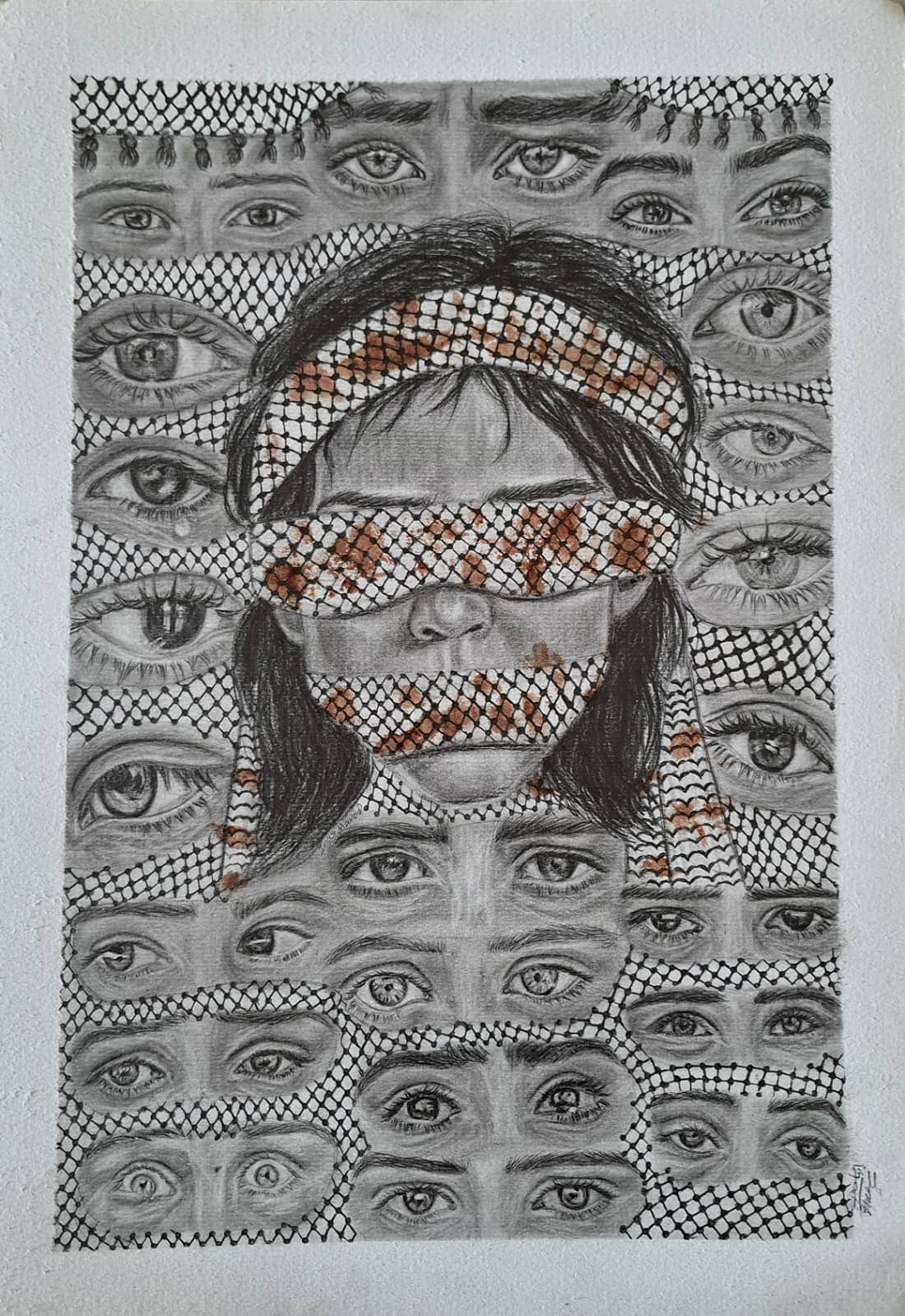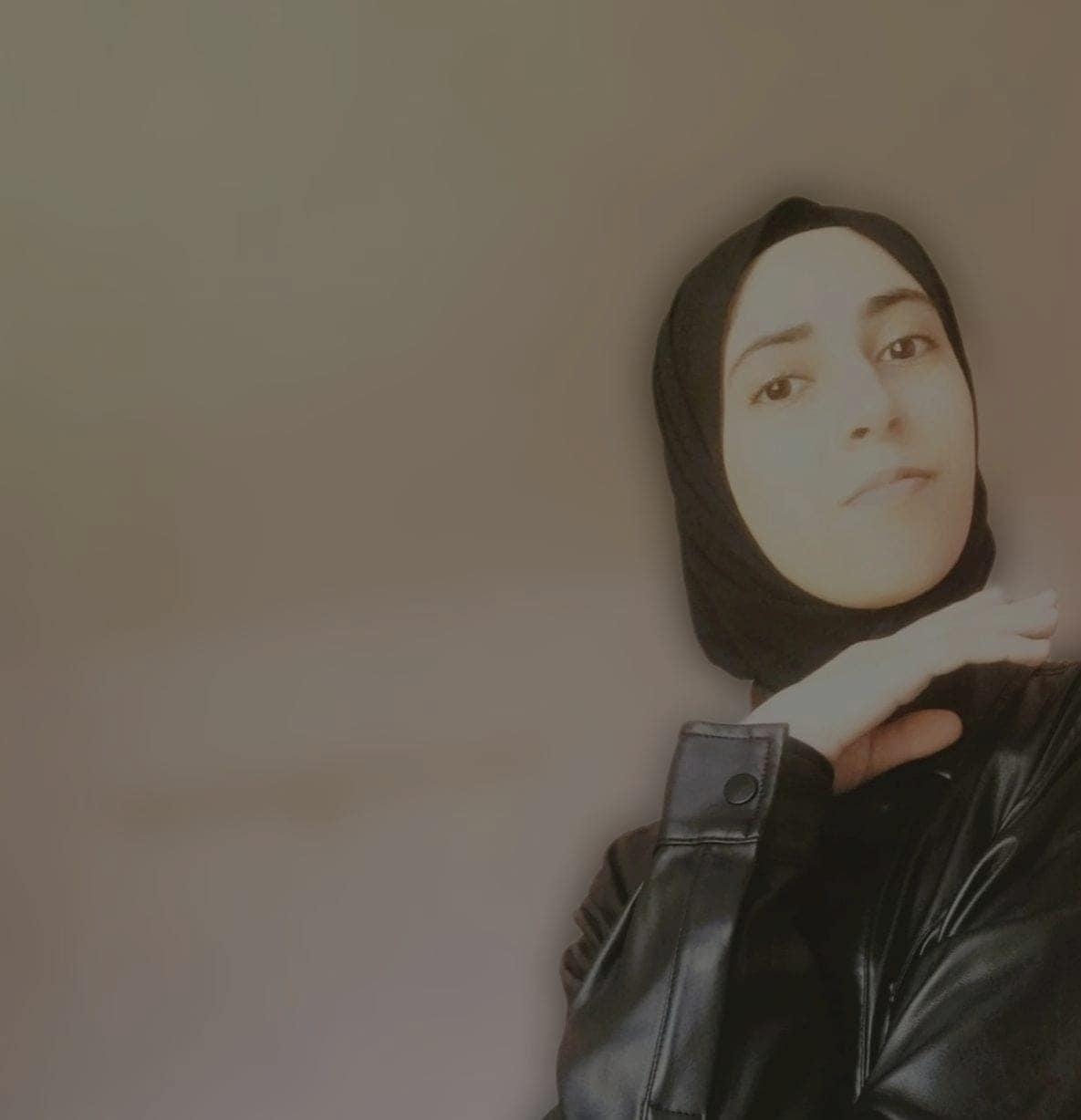Enas Marouf’s latest drawing, “A Thousand Eyes Speak,” reflects a world seen through both distance and closeness, a gaze that holds what words cannot.
When I first encountered the work, I was caught by the quiet weight of it: how a single eye could hold both memory and protest, grief and insistence. Each one feels alive, fixed in its own moment of seeing.
The piece invites us to look back, not at destruction, but at presence. It asks what remains when language fails, and how looking itself can become a form of witness.
I reached out to Enas to learn more about the stories behind her drawing and the world that shaped it. What follows is her reflection on the work and on what it means to see, remember, and speak through art.
Taqwa Ahmed Al-Wawi
Artist Statement–Enas Youssef Ismail Marouf
My name is Enas Youssef Ismail Marouf, a 20-year-old Palestinian artist from Gaza. I have not received formal academic training in art, yet drawing has always been my most honest language—my way to turn emotion into form, and silence into story. I believe art is the truest human language, one that crosses geography and time, reaching hearts directly.
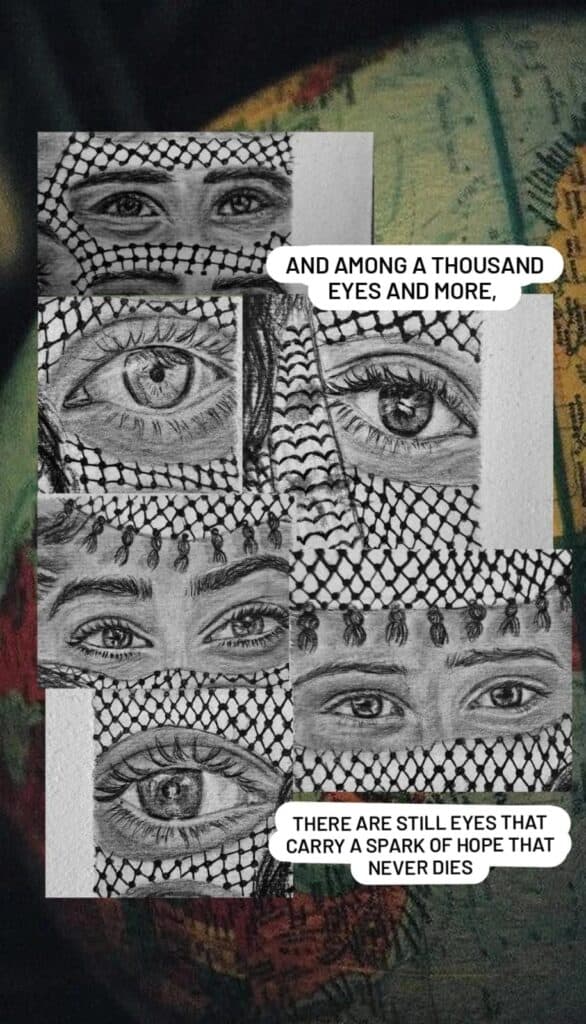
For me, as a Palestinian artist, art has shifted from personal expression to a form of testimony—a record that refuses disappearance. Here in Gaza, grief is wide, memory carries scars, yet the act of creation continues. I feel a responsibility not only to speak for myself, but to hold the voice of a people living through ongoing erasure.
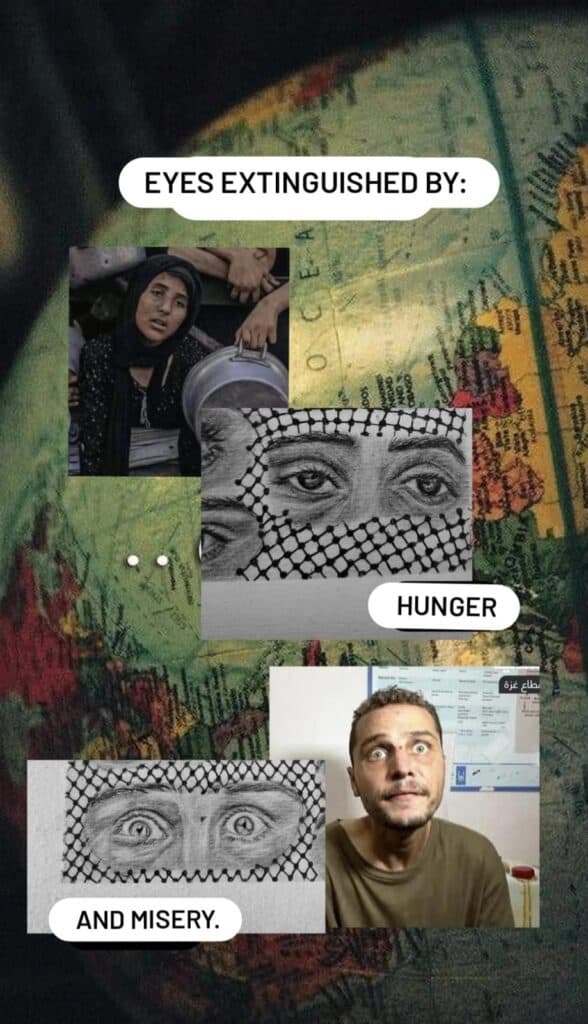
My drawing, “A Thousand Eyes Speak,” was created from this sense of duty. I chose the eye as the central image because the eye does not lie—it is the mirror of the soul and a vessel of truth. Within its depth live stories too heavy for words, and pain that language cannot contain.
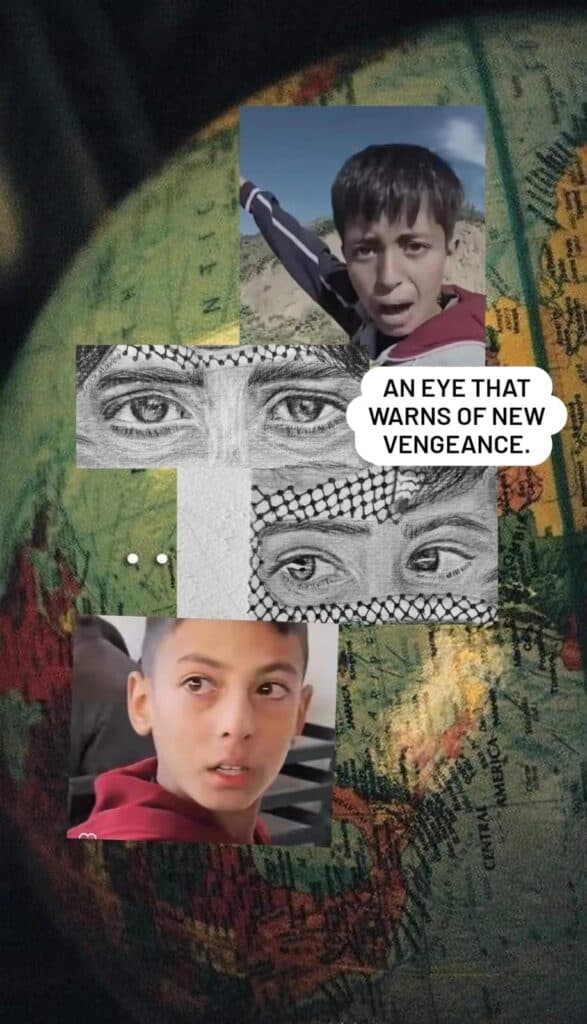
I speak of a thousand eyes, though they are far more—eyes that have seen death, siege, hunger, separation, and immense loss.
Eyes that question. Eyes that remember. Eyes that warn. Eyes that have not turned away, still carrying a small light that endures.
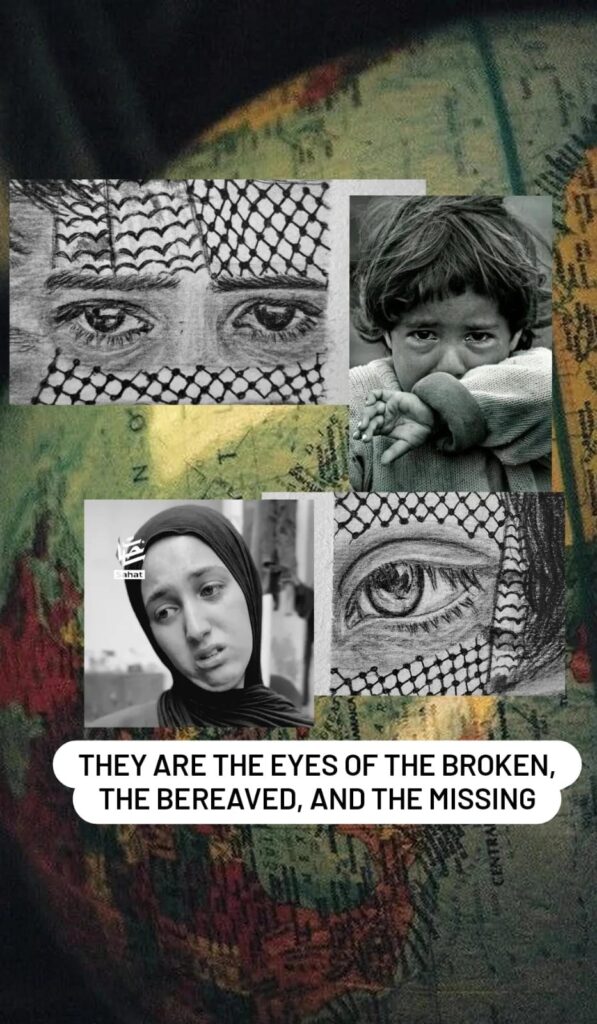
In this work, the child represents Gaza—wounded yet standing, blindfolded because her sight has been taken. The blindfold and gag reflect the systematic silencing of truth, while the blood-stained Palestinian keffiyeh marks the crime of identity—the simple fact of being Palestinian, a “guilt” punished without end.
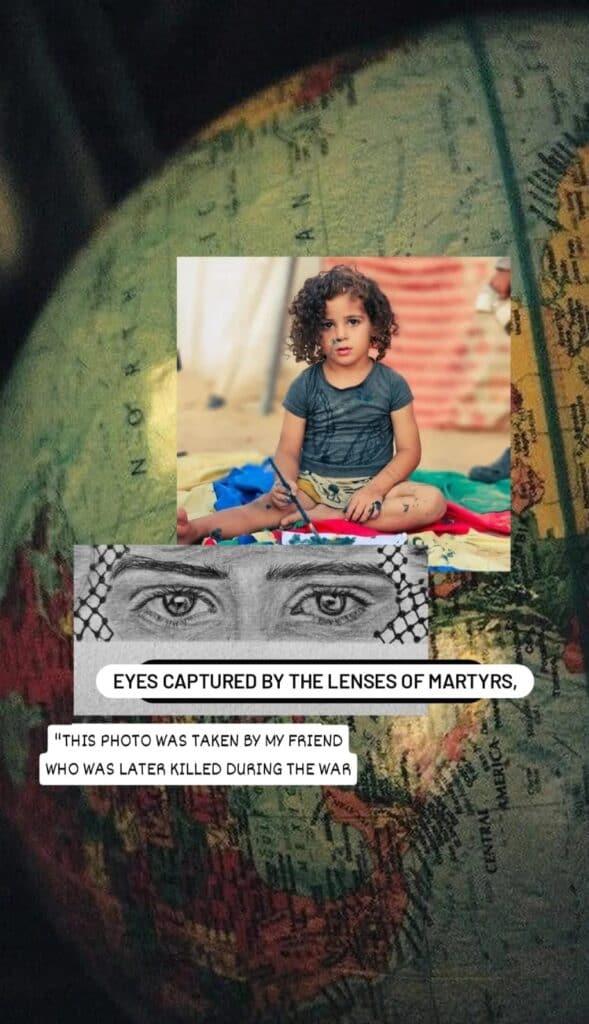
Twenty-one eyes appear in the piece, each holding a quiet biography: a story of endurance, yearning, and withheld strength. These are not imagined faces; they are fragments of a shared memory, drawn from real human lives—lives that meant something.
Baladi Magazine Editor Layla Goushey asked about the small details on the eyes and faces such as one that look like speck of dust or maybe a fly.
I am glad you noticed the small details, dear Layla. I pay attention to them because I live them. These seemingly minor things take much from us—from our time, our hearts, our breath.
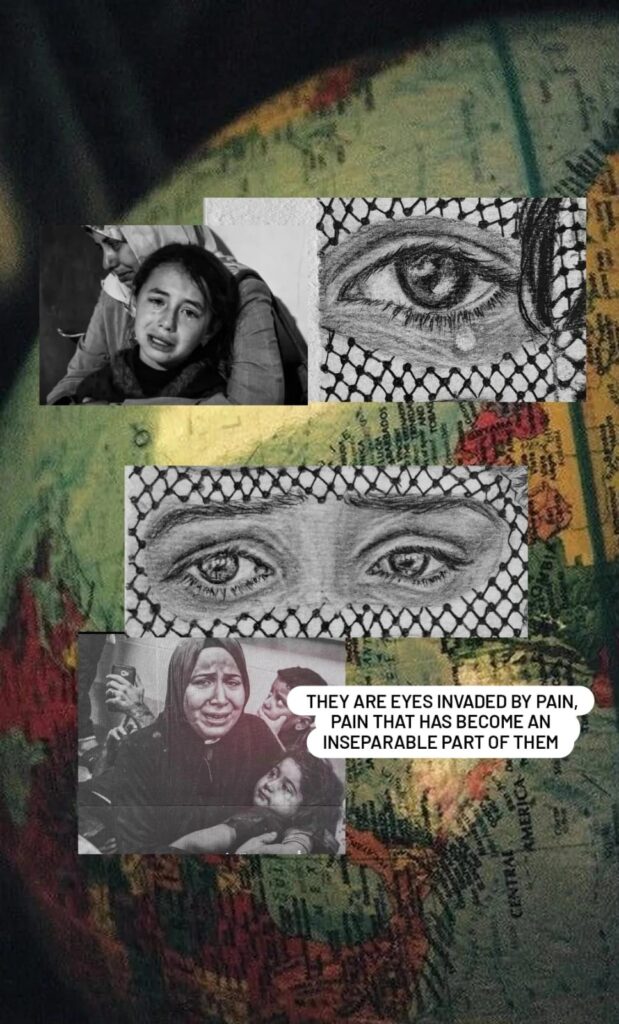
Life in Gaza was once full—filled with dreams, families, and purpose. There were writers, engineers, musicians, doctors, lovers, and children who dreamed freely. Today, more than two million people live under the weight of siege and deprivation, yet they continue, quietly and bravely, to begin again each day.
Through my work, I do not paint sorrow—I paint record. I paint memory. I paint a truth that insists on being seen. Stories like ours should not vanish beneath rubble or numbers.
Artwork Details
Medium: Graphite on Canson paper
Size: A3 (42 × 29.7 cm)
Paper weight: 300 g/m²
Grades used: HB, 2B, 6B
Symbolism
The child: Gaza
The keffiyeh: Palestinian identity
The eyes: Human stories and collective memory
Blood-stained keffiyeh: Ongoing crimes against our people
Enas Yousef Esmail Marouf
Enas Yousef Esmail Marouf, born in 2005, is currently studying for a Bachelor’s degree in Arabic Language and Teaching Methods. She is a visual artist and has participated in several local art exhibitions. She is passionate about literature and art, seeing them as a means of freedom, expression, resistance, and patience.

Taqwa Ahmed Al-Wawi
Taqwa Ahmed Al-Wawi is a 19-year-old Palestinian writer, poet, and editor from Gaza, studying English literature at the Islamic University of Gaza. You can find more of her work here.https://tqwaportfolio-project.netlify.app
